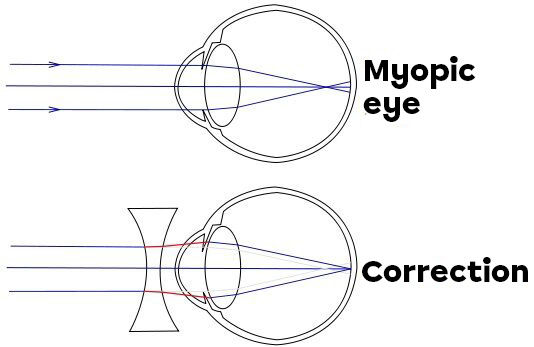Visual perception depends to a very large extent on the quality of the image that will be formed on the retina. Several diseases and deformities of the eye can affect the quality of this image. In order to provide a three-dimensional perspective view, two eyes are needed, which is called stereoscopic vision. Thus, two images are formed on the retina and a slight offset between them allows the brain to construct a three-dimensional image and assess the distance of objects.
When the eye focuses the light rays on the retina, the image is sharp and the eye is said to be emmetropic. This is the optimum situation for an eye which, at the moment, could be considered flawless.
Myopia is an eye defect that causes distant objects to appear blurry because the eyeball is longer than normal or the crystalline lens is too curved.
In both of these situations, the light rays converge even before they reach the retina. This problem is generally corrected with concave (or diverging) lenses, which allow the light rays to diverge to the crystalline lens and then converge towards the retina to produce a clear image.
Hyperopia is a vision defect that blurs near objects due to an eyeball that is shorter than normal or an insufficiently curved crystalline lens.
Presbyopia is a defect of the eye that blurs near objects due to a lack of flexibility of the crystalline lens.
These vision defects cause light rays to converge behind the retina. Both of these defects are corrected by convex (or converging) lenses that make the light converge more before it is deflected by the lens onto the retina.
Astigmatism causes poor vision of distant and near objects due to irregularities in the curvature of the cornea or lens.
In this case, the light rays passing through the transparent media move in all directions. To remedy the problem, cylindrical lenses can be worn to concentrate the light rays, thus limiting their deflection.


